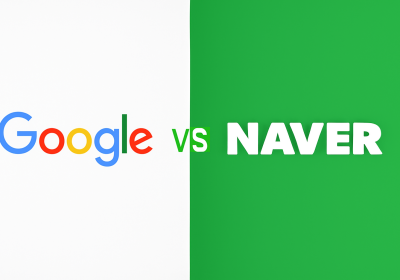What It Really Takes to Succeed in Japan’s Digital Market

Introduction
Japan’s sophisticated digital ecosystem and high consumer spending power make it an increasingly attractive market for foreign businesses. Despite its traditionally conservative approach to digital adoption, Japan has undergone a remarkable transformation in recent years. Since the COVID-19 pandemic, digital advertising spend has surpassed traditional TV advertising, which is a trend expected to continue through 2025 and beyond.
For international brands looking to expand, understanding Japan’s unique digital landscape is crucial. Japanese consumers now spend nearly twice as much time online as they do watching television, creating vast opportunities for digital marketing success.
This guide will help foreign businesses navigate Japan’s distinctive digital marketing environment with strategies tailored specifically for this lucrative but nuanced market.
Understanding Japanese Consumer Behaviour
Cultural Nuances in Digital Engagement
Japanese consumers approach online content differently than Western audiences. They place tremendous value on cultural norms, traditions, and authenticity in brand communications. Marketing messages that might work elsewhere often fall flat in Japan without proper cultural adaptation.
Distinctive Consumer Preferences
Unlike Western markets, Japanese users gravitate toward utility-driven, privacy-first platforms. They engage more readily with content that feels genuine rather than overly polished or sales-focused. This preference for authenticity shapes how brands must position themselves.
Digital Behaviour Insights
Japan’s digital engagement is impressive:
• Over 88% of Japan’s population actively uses social media
• Mobile penetration stands at 97%, making mobile-first strategies essential
• LINE dominates with 98 million monthly active users
• Yahoo! Japan remains a major player in search and email
Tips for Appealing to Japanese Consumers
To connect with Japanese audiences:
• Focus on community benefits rather than individual advantages
• Respect privacy concerns in all communications
• Create highly localised content, not just translated material
• Incorporate seasonal themes and cultural references
Mastering Local Digital Platforms: LINE and Yahoo! Japan
LINE’s Central Role in Japanese Life
LINE isn’t just a messaging app in Japan – it’s a “super platform” integrated into daily life. Beyond chat functions, Japanese consumers use LINE for:
• Customer service interactions
• News consumption
• Shopping and e-commerce
• Digital payments
• Loyalty programmes
Brands succeeding in Japan leverage LINE’s extensive features, creating sticker campaigns and integrating with their customer relationship management systems.
Yahoo! Japan’s Continued Dominance
While Yahoo has declined globally, Yahoo! Japan remains a primary gateway for:
• Search queries
• Email communications
• News consumption
• Shopping comparisons
This creates unique advertising opportunities unavailable in other markets. Foreign businesses can target advertisements based on user behaviour across Yahoo!’s extensive ecosystem.
Effective Platform Integration Strategies
Success requires more than just creating accounts on these platforms. Businesses must engage natively, understanding the specific content formats and user expectations of each platform.
Many successful brands combine global platforms (Instagram, Facebook) with local giants (LINE, Yahoo!) to maximise reach while maintaining cultural relevance.
Cultural Alignment: Adapting Your Message
Visual and Language Adaptation
Japanese consumers expect exceptionally high aesthetic standards and culturally appropriate visuals. Colours, imagery, and packaging must reflect local tastes and often incorporate seasonal themes. Language should employ formal and honorific styles, with careful attention to nuance that direct translation often misses.
Respecting Cultural Values
Marketing messages that align with Japanese values of respect, tradition, and group harmony earn consumer trust more effectively. Campaigns highlighting community benefits, quality assurance, and reliability consistently outperform those emphasising individualism or aggressive sales tactics.
Maintaining Brand Identity While Adapting
The key challenge for foreign businesses is preserving core brand identity while adapting to local preferences. This delicate balance requires:
• Culturally aware creative teams
• Local partnerships and consultation
• Understanding which brand elements should remain consistent
• Identifying which elements can be adapted without compromising identity
Case Studies: Success Stories in Japan
Global Brands Finding Local Success
McDonald’s Japan exemplifies successful localisation through:
• Seasonal menu items that reflect Japanese tastes
• Integrated LINE campaigns with exclusive offers
• Community-focused messaging that resonates culturally
Toyota similarly leverages both global reach and local sensibilities by:
• Tailoring communications to Japanese expectations of quality
• Emphasising innovation within a Japanese context
• Using platform-specific content strategies
Localised Strategies Beyond Translation
These success stories demonstrate that effective marketing in Japan requires more than language translation. Both brands have invested in understanding cultural contexts and consumer expectations, creating campaigns that feel authentically Japanese while maintaining brand consistency.
Key Lessons for Foreign Businesses
The most important takeaways include:
• Deep cultural insight drives engagement
• Platform-specific strategies outperform generic approaches
• Willingness to adapt products and campaigns to local tastes is essential
• Long-term investment in understanding the market yields results
Overcoming Market Entry Challenges
Common Marketing Pitfalls
Foreign businesses often stumble due to:
• Cultural misunderstandings in messaging
• Regulatory complexities unique to Japan
• Underestimating the need for localisation
• Improper tone, design, or platform choices
Navigating the Competitive Landscape
Japan’s market features many innovative local brands. Standing out requires:
• A clearly defined unique value proposition
• Localised engagement strategies
• Exceptional customer experience standards
• Patience in building brand recognition
Supportive Tools and Technologies
Businesses entering Japan can leverage:
• AI-driven analytics to understand consumer behaviour
• Influencer marketing adapted to Japanese preferences
• Social commerce integrations
• Automated translation tools (with human oversight)
Practical Solutions for Market Entry
To navigate these challenges effectively:
• Invest in comprehensive local market research
• Hire or consult with culturally fluent teams
• Partner with agencies experienced in Japan
• Leverage Japan’s advanced digital marketing infrastructure
Conclusion: Embracing Digital Marketing in Japan
Japan’s digital marketplace offers tremendous opportunities for foreign businesses willing to invest in understanding its unique characteristics. Success demands more than applying global strategies—it requires cultural fluency, platform mastery, and commitment to authentic, localised engagement. As digital advertising spend and social media usage continue to rise in Japan, businesses that adapt to this distinctive ecosystem position themselves for sustainable growth and market penetration.
Charlesworth Group, a leading Japan digital marketing agency, specialises in helping foreign businesses navigate Japan’s complex digital marketing landscape. Our team of cultural and digital experts can guide your entry strategy, create localised content, and optimise your campaigns for maximum impact. To discuss how we can support your business goals in Japan, email us today or contact our team to get started on your journey to success in this dynamic market.


